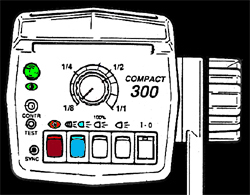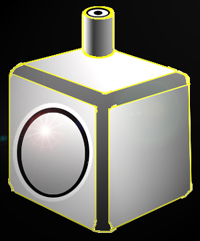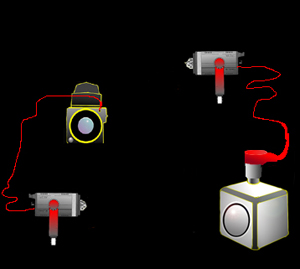| Generally
only one studio flash head need be connected through the flash
sync cord which is the wire cord that connects the flash to
the camera, as other units can be fired simultaneously
from the pulse of light from the connected flash unit by a device
often built in to the unit called a slave unit. |
 switch
to turn the slave unit on
switch
to turn the slave unit on
Slave sensor
Visual conformation function switch
(the eye shapes are icons embossed beside the functions) |
| Not
only for studio units that do not have a built in slave unit,
but for portable flash units as well,
a portable slave unit can be attached through the flash sync
cord plug on the flash unit. The slave unit is a small switch
that reacts to the sudden intensity of the first flash, setting
of the other units and if not built into. |

A portable slave unit
|
| The
slave unit must be in a position to be receptive to the initial
pulse of light or it may not fire, and some flash units have
a means of checking this called visual conformation. The visual
conformation feature turns off the modeling light for 1 or 2
seconds and then turns it on again. This pulse of darkness gives
a clear indication the flash from the master flash head connected
to the camera has reached the secondary unit and activated the
flash. |

Move over image to view roll over image
|